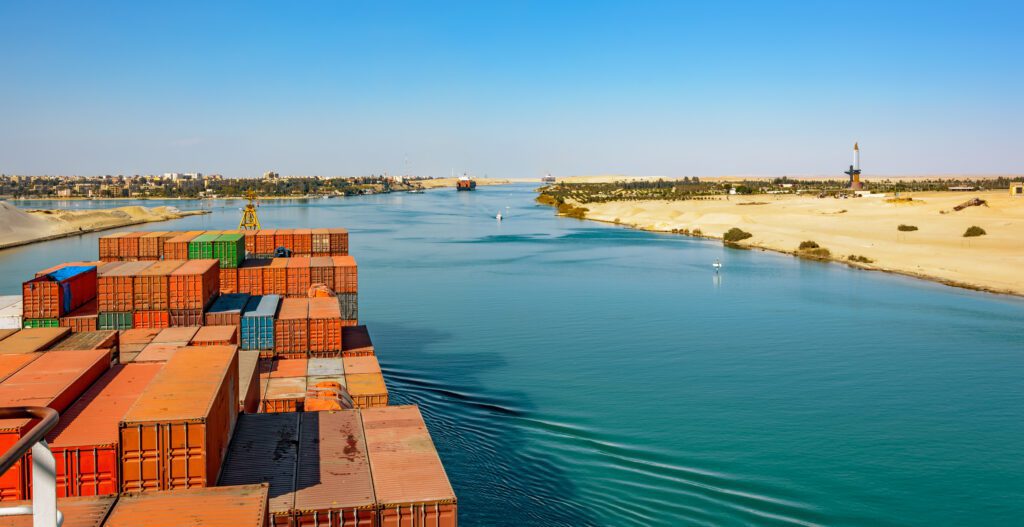We all heard about it. It was breaking news in every country around the world: the cargo ship stuck in the Suez Canal.
Serving as one of the most important global supply chain routes, the Suez Canal connects all goods from Asia to Europe. It is also a prime location for regional hubs supplying shipping oils and hydrocarbons.
On March 23, 2021, high winds caused the Ever Given, a 20,000 TEU container ship, to became stuck in a single lane stretch of the canal. The blockage led to devastating delays, losses, and stressful attempts to fix what had gone wrong.
With real-time visibility and risk management solutions, the cargo ship-Suez Canal disaster might have been avoided. But to understand how the situation could have been prevented, we must first examine what went wrong.
The Suez Canal cargo ship disaster
The Suez Canal cargo ship blockage, unfortunately, happened during the‚ “perfect storm”. The impact of COVID-19 and clogged ports across the United States had left the global supply chain at its most vulnerable.
The Ever Given’s cargo was worth close to $10 billion and included everything from cars to sneakers and livestock. Once the cargo ship became stuck, these goods became unreachable.
The Ever Given remained stranded for months, which compromised the integrity of products within each container. Millions, if not billions, of dollars, were gone within a day of being trapped.
To make matters worse, the Ever Given wasn’t the only ship being delayed — so were the 370+ ships behind it. And because of the media spectacle, criminals around the world were receiving intel, live, as news fronts reported on the issue.
Losses and potential problems
Wherever cargo isn’t moving, it is at greater risk for being stolen. The Suez Canal’s massive delay left tons of cargo vulnerable at ports and freight depots. Due to media reports, criminals were aware of the exact location of 30% of global trade.
Theft was far from the only risk facing these ships. Perishable goods and medications are crucial human necessities that rely on quality control measures. Ships lacking time-temperature controls could not preserve the quality of their food and ensure food safety.
Even after the cargo ship was freed, things weren’t over for these shippers. Companies may have needed to pay customers for missed deadlines. And if any agricultural goods went bad, producers were left flailing as they tried to recoup lost revenue.
Preventing another cargo ship crisis
Though the damage from the Suez Canal cargo ship delay cannot be undone, it has taught the industry several valuable lessons. For instance, it has shown that a single “traffic jam” can quickly stymy world trade. It has also revealed how salvage operations can take time and effort, not just from authorities, but also crew members.
In short, the Suez Canal crisis has made it clear that we must take steps to prevent and prepare for future crises. And in order to do that, shippers need real-time visibility and risk management platforms. These platforms can help organizations work quicker and faster to help resolve any issues on their end. In turn, cargo ships may be able to avoid major disruption and loss of revenue.
Real-time alerts and notifications can enable supply chain teams to find alternative routes and solutions to protect their cargo. The right intel and insights into criminal activity around the world can put people and processes in place for cargo protection. Additionally, a single unified view of shipments ensures better data integrity, while temperature controls can support product integrity.
Together, these technologies can create a stronger, more viable supply chain.
The Suez Canal blockage has put supply chain processes at the forefront of our everyday lives. The event has exposed organizations in many ways and has forced them to create tighter, more resilient supply chains. These supply chains require real-time visibility and risk management platforms to keep their goods secure and protected.
Now that you understand what led to the Suez Canal cargo ship incident, learn more about how real-time visibility can prevent future supply chain disasters.





